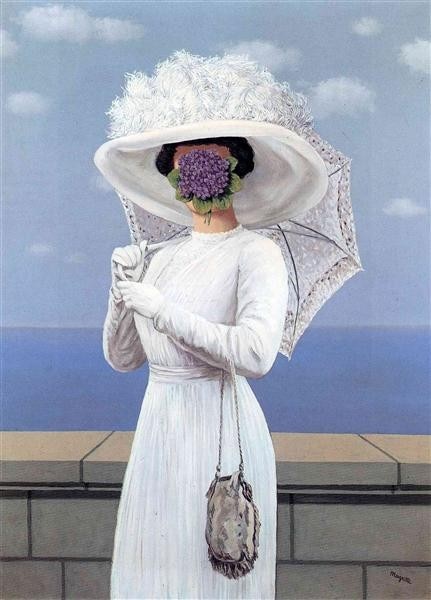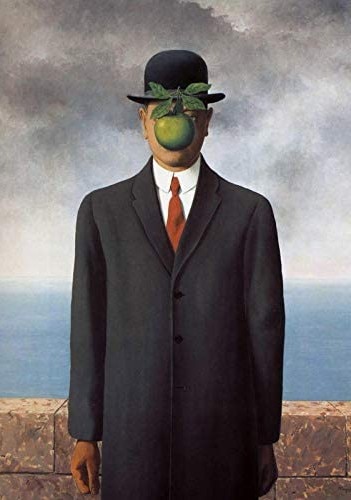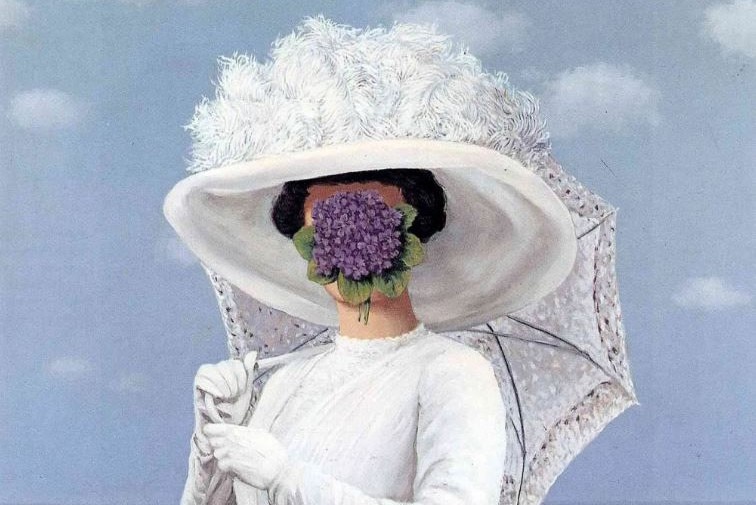“...We have the apparent visible, the apple, hiding the hidden visible, the person’s face. It is something that happens all the time… There is an interest in what is hidden and what the visible does not show us. This interest can take the form of a very intense feeling, a kind of conflict, I would say, between the hidden visible and the apparent visible.”
He is so persistent in explaining his art, he never stops returning to the reasons of his symbolism, the reasons of his painting and the way he chooses to represent them. Renè Magritte, Belgian painter and leading exponent of the Surrealist movement, painted two extremely emblematic works in 1964 to which he gave the same title despite having two different subjects: The Great War. Man and woman, two universal poles of energy, active and passive, feminine and masculine.
A lady dressed in an elegant white dress holds a parasol, undoubtedly a bourgeois woman. The sea in the background. A bouquet of lilacs covers her face. The hidden visible bursts into our consciousness.

In an absurd, almost unconceivable way, Magritte narrates the bloody events of the 20th century by suggesting a new interpretation: the face of war is undoubtedly more monstrous than its dress. Attractive in her posture, refined in her manners and yet deceptive because concealed. The surrealist vision, however, does not end there. A widowed bride eternally dressed in white? And the flowers? They are nothing but a symbol of innocence and tenderness, the bouquet of a wounded bride, left alone to her fate because of an absurd war.
The levels of the work are multiple, not least the perspective that centres the character’s loneliness.
In the second painting there is a man, dressed in the classic bowler hat so dear to the artist. A male character with his face covered by an apple. The original sin, the forbidden fruit, and then again an element hiding another element. A figure that in turn covers the landscape. Here we have no reference points, no architecture, no space, only the title to explain: The Great War.

The opposites and the centre, the lie and the sin. An elegant but strong denunciation that enters powerfully into our deepest selves and helps us reflect.
What is a war? Why do we need it? Who is war? Men? Women? Power? Ambition? Hunger?
Magritte answers: “The visible always hides another visible. My paintings simply reveal this state of affairs in a direct and unexpected way. Between what the world offers us as visible and what this visible conceals, a certain action is at play. This action is visible, and it is like a struggle, and therefore the name “Great War” reproduces its content with sufficient accuracy”.


